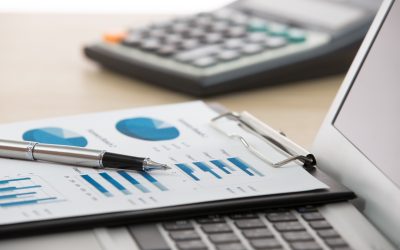Jeff Muhlenkamp was interviewed by Kathryn Welling on March 15, 2023. Their conversation is published in the Welling on Wall St. article, “Hard-Won Market Insights – Muhlenkamp & Co.’s Leader on Turning Market Scares into Profits.” Included below are excerpts of the interview.
Continuing with their discussion of lessons learned during the Global Financial Crisis (GFC) of 2008-2009 and the COVID shutdowns in 2020, Jeff mentions that market volatility and turmoil create buying opportunities. When the market goes down, you have to be prepared to buy but also be a little patient…
JEFF: The other thing I learned is not to be too quick to snap up what looks like a relative value. It’s tempting to say, “oh, look, it’s down 30% from its peak. It must be cheap.
Kate: Ain’t necessarily so.
JEFF: Right. Pay attention to other things, like sustainable cashflow, an unassailable balance sheet, a moat — and be more patient than it’s probably my nature to be. But I’m not sure that I’ve developed yet a great rule of thumb on how to avoid being too early versus too late. In retrospect, you can say, oh well, clearly there were two market bottoms in ’08/’09. One was when the government finally stepped in after the Thanksgiving 2008 debacle when Congress had failed to pass a bill — a bailout, basically. Then, after about a week in which the market puked up another 10% of the index’s value, Congress came around and did it. And then the last one, of course, came the next March, after the Financial Accounting Standards Board (FASB) changed the rules on banks having to mark their holdings to market, which got all the financials out of their doom loop on asset prices. Those were two big markers that significant actions were being taken to resolve the underlying issues. If you were able to see them for what they were, that was helpful. In the COVID Panic of 2020, the key really was that you needed to pay attention to when the Fed basically said, “We’re going to do whatever it takes,” and not just the Fed, but the rest of the government chimed in, too. The Fed essentially said, “We’ll lend whoever as much as they need,” and the government said, “We’ll spend as much as we need to, regardless.” If you were paying attention to that response, it probably struck you that it might be a very useful market indicator. And it would have helped you step in and start buying when things pretty soon stopped getting worse in the markets — and started getting a little better.
Kate: That turn came very quickly.
JEFF: Basically because people started seeing the government throwing really huge sums of money at the problem.
Kate: Most dramatic market slides aren’t reversed nearly so expeditiously. Then again, most aren’t sparked by a virus. A typical bear market is both long and torturous as complex imbalances aren’t worked out overnight.
JEFF: Correct. And frankly, it’s easier on your psyche to be late, rather than early. If you miss the precise bottom but you catch it on the upswing, the good news is once you’ve got back in, you’re generally going to see positive results. If you’re early in scooping up a “bargain” and you discover a still-deeper bottom ahead of you, you’re going to feel really, really, really bad, for a period of time.
Kate: Really bad?
JEFF: Really bad. Assuming you hold on, it’ll work out quite well in the end, but for a period of time you’re going to feel phenomenally stupid and bad. I used the totality of that experience in 2020. I put some money to work in late March, early April. But then I held back a bit and didn’t put some more money to work until later in May and early June. WESCO International (WCC), for instance, is a stock that I was a little late on. They had won a bidding war to buy another B2B services company [Anixter International] just before the shut down, and there was some concern that WESCO was going to “kitchen sink” their earnings on their next earnings call, so I decided to be a little patient. Did I nail the bottom on that company? No, I did not. Did I get a nice double out of it in the next year? Yes, I did. Good enough.
Kate: I checked your year-end 2022 portfolio and noticed you didn’t get tempted to buy banking stocks as they got hit last year — as some value types did.
JEFF: Well, the way I think about it, that choice was really informed by Nassim Nicholas Taleb’s book, “Antifragile: Things That Gain from Disorder.” Are you familiar with that?
Kate: Oh, quite.
JEFF: His descriptions of fragile and robust and antifragile really made a ton of sense to me. Ever since coming out of the Great Financial Crisis, when I did a lot of research and thinking about the banking industry, I’ve come to realize that banks are inherently fragile.
Kate: What, gathering short-term deposits and lending it long term doesn’t sound like a winning business plan?
JEFF: Especially when you lever up to do it, et cetera, et cetera. The fractional reserve banking system is inherently fragile and, no matter how well-run, is vulnerable to a run on the bank any day that all its depositors decide to leave. Any day. In light of that, I want to make sure that when the Fed starts to raise interest rates, contract the money supply and tighten the availability of money, I don’t want to be in a fragile asset. Meaning, I don’t want to own banks. The time to buy banks is in the middle of a crisis when they’re all trading at book or less, blah, blah, and things start to get a little better. Then you sell them sometime later before the Fed starts constricting the money supply again.
Kate: If you can.
JEFF: We have not owned banks in a year and a half or more. Now, did bank stocks get down to book for a while during that time? Yes, they did. Did they bounce off of those lows? Yes, they did. But what I said was, don’t get anxious here. The Fed was still raising rates and the Fed was still shrinking their balance sheet. There might be more pain. That’s when you want your holdings to be robust, to be antifragile. And what you want, instead, is to be partnered with an allocator of capital with excess cash when everybody else is desperate for it.
Kate: Do you care to bring up any other pointers for investors?
JEFF: Let me think. You asked earlier what I learned early in my money management career about investing amid the volatility of 2008 – 2009, and that reminds me. People tend to talk about volatility being driven by greed and fear. But one of my conclusions, after surviving that financial crisis, was to be very mindful of leverage. I think that whole downturn was driven not so much by fear, as it was by the forced unwinding of truly excessive leverage.
Kate: There’s no doubt about it, once prices slide below the market’s collective pain point.
JEFF: Again, once that unwinding of leverage starts, it’s an essentially mechanical process. The bank doesn’t care if you’re hopeful or fearful. You’re getting the margin call. It wants its money back, now. So you sell whatever you can — likely your best most liquid assets — into the market to repay your margin lender. And that adds even more selling pressure to the rout in progress. And the knock-on effects are some weird otherwise inexplicable price movements. So I disregard all the behavioral science stuff when it comes to understanding bear markets. Leverage simply turns the market into a machine. Turn the crank and it forces sales.
Kate: That’s why, while delightful on the upside, leverage is incredibly dangerous and destructive to investment returns, once prices reverse course sharply.
JEFF: It actually surprises me to a degree — but then really doesn’t — that the Fed doesn’t do more to restrict leverage. Prohibiting margin buying would take a whole lot of volatility swings out of the markets.
Kate: Okay. Anything I haven’t asked you about that you wish I did?
JEFF: [Laughing] You are the only person to ever ask me that question. It’s the same one I ask managements every time I talk to them. That’s really interesting. I guess the one thing I would highlight to your readers, even as I highlight it to my own clients, is that probably your best risk-adjusted reward right now comes in money market funds*.
Kate: They are paying real money these days on investments, for the first time in ages.
JEFF: You’re taking very, very little risk, particularly if you’re in very short-dated governments or sometimes commercial bonds. Yet you’re getting a 4% – 4.5% yield. That’s been true now for about six months, and there have been a lot of flows out of bank deposits, for instance, and into money market funds.
Kate: From your lips to Jamie Dimon’s ears! Thanks Jeff, for letting me grill you to elicit portfolio insights.
*An investment in a money market fund is not insured or guaranteed by the Federal Deposit Insurance Corporation (FDIC) or any other governmental agency. Although money market funds seek to preserve the value of your investment, it is possible to lose money by investing in a money market fund.
The comments made in this interview are opinions and are not intended to be investment advice or a forecast of future returns.




